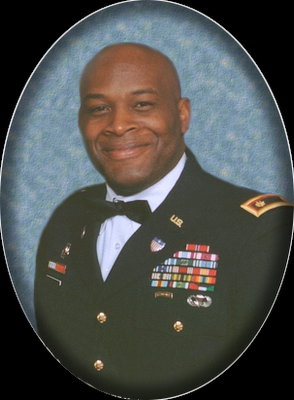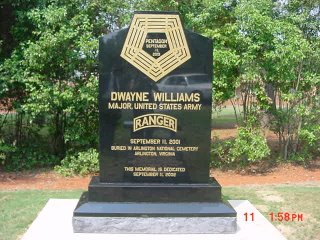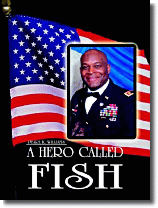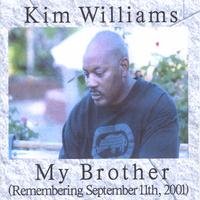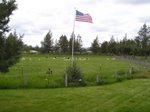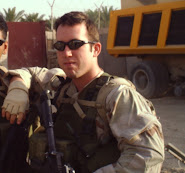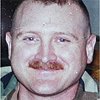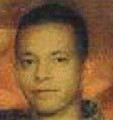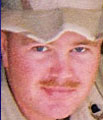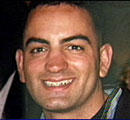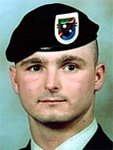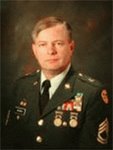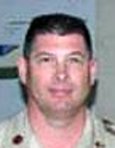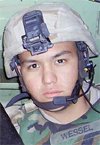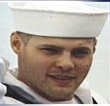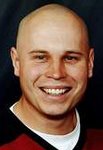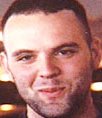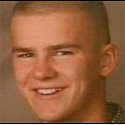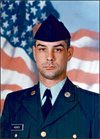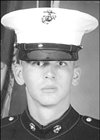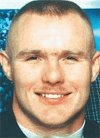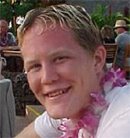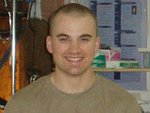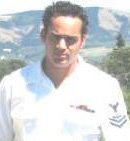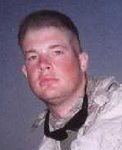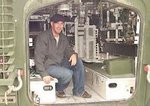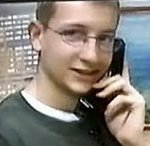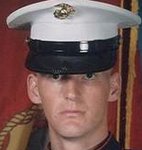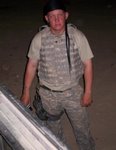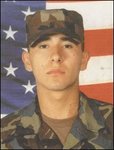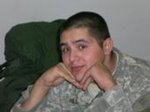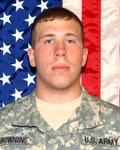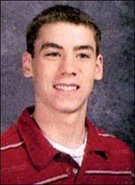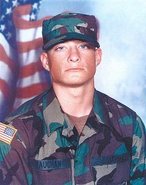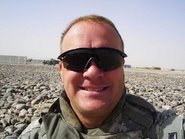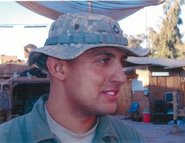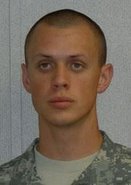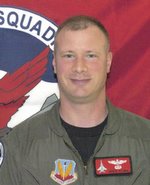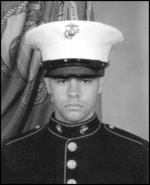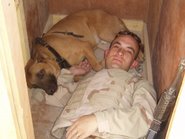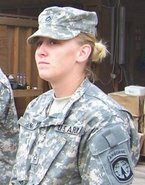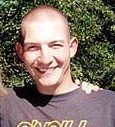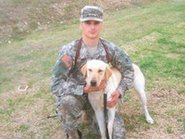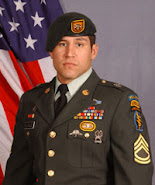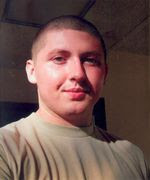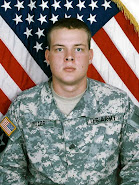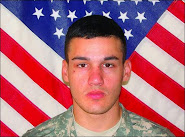


Sergeant First Class Jared C. Monti -
Medal of Honor Operation Enduring Freedom
In June of 2006, the 3rd Squadron of the 71st Cavalry Regiment (Recon), 3rd Brigade Combat Team, 10th Mountain Division, prepared to execute Operation Gowardesh Thrust, a Squadron size operation in the Gremen Valley, Nuristan Province, Afghanistan.
The operation was designed to disrupt enemy operations in the Gremen Valley by denying the enemy freedom of movement and the use of critical staging areas near the border with Pakistan. The initial phase of the operation require
The operation was designed to disrupt enemy operations in the Gremen Valley by denying the enemy freedom of movement and the use of critical staging areas near the border with Pakistan. The initial phase of the operation required a 16-man patrol to infiltrate into the area of operations in advance of the Squadron’s main effort.
The patrol, consisting of snipers, forward observers and scouts, would maneuver north along a high ridgeline overlooking the Gremen Valley. From the high ground of the ridge, the patrol would provide real-time intelligence and help direct fires against enemy forces attempting to oppose the Squadron’s main effort.
On the evening of June 17, 2006, a convoy transported the patrol to a pre-established mortar firing position south of the village of Baz-Gal near the Gowardesh Bridge. The following morning, the patrol infiltrated on foot from the mortar firing position into their area of operation. For three days, the patrol moved north up the ridgeline through rugged mountain terrain. Due to the difficulty of the climb and temperatures near 100 degrees, the patrol moved mostly at night or in the early morning hours; stopping during the heat of the day to observe the valley below.
On June 20, 2006, the patrol leaders, Staff Sgt. Christopher M. Cunningham and Staff Sgt. Jared C. Monti, halted the patrol on the ridgeline of Mountain 2610, approximately 5 kilometers northwest of the village of Gowardesh. With an elevation of over 2600 meters, Mountain 2610 commanded a view of several enemy known areas of interest, including insurgent safe houses and the summer residence of Hadji Usman, an HIG commander, who was a vetted Combined Joint Task Force 76 insurgent target.
Staff Sgt. Cunningham and Staff Sgt. Monti selected a flat area on top of the ridge approximately 50 meters long and 20 meters wide, with a trail running along the eastern edge. At the southern end of the position, there were several large rocks, a portion of an old stone wall and a few small trees. The terrain sloped gradually upward to the north. At the northern end of the patrol’s position there was a line of dense vegetation composed of trees, heavy brush and smaller rocks. In between the large rocks to the south and the tree line to the north was a clearing approximately 40-50 meters in length. The terrain dropped off steeply on the eastern and western sides of the position. The rocks and trees around the position provided concealment and protection for the patrol as they observed the valley more than 1,000 meters below.
The patrol spent the night of June 20, 2006, observing from their position on Mountain 2610. The following morning the patrol was dangerously low on both food and water. A re-supply mission was scheduled for that day. The re-supply was originally coordinated to occur in conjunction with the Squadron’s main effort, which included a large air assault into the Gremen Valley. The heavy helicopter traffic associated with the air assault mission would have provided distraction for the re-supply; reducing the risk that the drop would compromise the patrol’s position. However, on the morning of June 21, 2006, Monti and Cunningham learned that the Squadron operation had been pushed back until June 24, 2006. The delay extended the patrol’s mission by several days, making re-supply critical; however, the absence of other aerial traffic increased the risk that the re-supply would compromise the patrol. Because of the critical shortage of water, it was determined that the re-supply would go forward as planned despite the risk of compromise.
The drop zone was located approximately 150 meters from the patrol’s position. Staff Sgt. Cunningham and Staff Sgt. Monti brought the majority of their patrol to the re-supply drop zone to provide security and to transport the supplies back to the patrol’s position. A smaller group remained at the observation position to provide security and to continue to survey the valley below. At approximately 1:30 in the afternoon, a UH-60 Black Hawk delivered food and water to the patrol. The patrol secured the supplies and began transporting them back to their observation position.
Spc. Max Noble, the patrol’s medic, was one of the Soldiers who remained at the observation position while the majority of the patrol picked up the re-supply. Spc. Noble was using a spotting scope to look down into the valley. Prior to the patrol’s return from the re-supply drop, Noble observed a local national male in the valley using military style binoculars to look up towards at the patrol’s position. Spc. Noble informed Cunningham and Monti as soon as they returned. They watched the man observing the patrol’s position for several minutes before he picked up a bag and walked away.
As dusk approached, the patrol established a security perimeter around their position and scheduled guard rotations. The patrol members then divided up the supplies and prepared for the night. Staff Sgt. Cunningham, Staff Sgt. Monti, and Sgt. John R. Hawes sat behind one of the large rocks at the southern end of the patrol’s position and discussing courses of action in the event that their position had likely been compromised. Pfc. Brian J. Bradbury, Pfc. Mark James, Pvt. Sean J. Smith, Spc. Matthew P. Chambers, Spc. Shawn M. Heistand, and Spc. Franklin L. Woods were at the northern end of the position, near the wood line. Sgt. Chris J. Grzecki, Spc. Noble, and Spc. John H. Garner were along the trail on the eastern edge of the position using spotting scopes to monitor the valley below.
At approximately, 6:45 in the evening, Spc. Woods heard the shuffling of feet in the wood line immediately to the north. Before he could react, the patrol’s position was hit by a barrage of rocket-propelled grenades (RPGs), medium machine gun (PK) fire, and small-arms fire from the wood line. An enemy force of approximately 50 fighters was moving in under cover from two support-by-fire positions above the patrol to the north and northwest. Members of the patrol could hear enemy fighters giving commands as they moved through the wood line at the northern end of the patrol’s position.
At the time of the attack, the six patrol members at the northern end of the patrol’s position immediately dove for cover as the enemy opened fire. The attack came so quickly and with such ferocity, that many of the patrol members at the northern end of the position were unable to maneuver to get to their weapons. Others had their weapons literally shot out of their hands by the intense fire.
Spc. Heistand and Pfc. Bradbury were both near the wood line when the enemy opened fire. Heistand was armed with an assault rifle and Bradbury was a Squad Automatic Weapon (SAW) gunner. Both hit the ground and began to return fire. However, they soon realized that their fire was drawing the enemies’ attention to their dangerously exposed position in the open area near the wood line. Spc. Heistand told Pfc. Bradbury that they had to fall back to the south where the large rocks would provide better cover. Spc. Heistand then jumped up and sprinted back towards the large rocks at the southern end of the position. Pfc. Bradbury was directly behind Spc. Heistand as they headed for the rocks, however, Pfc. Bradbury did not make it back to the rocks.
Pfc. James, Spc. Chambers, Spc. Woods, and Pvt. Smith were also in the area near the wood line when the enemy attacked. They also fell quickly back towards the large rocks to the south. Chambers, Woods, and Smith successfully made it to cover without injury; however, Pfc. James was hit by small arms fire in the back and wrist as he ran for cover to the south. Although wounded, Pfc. James was able to crawl back towards the rest of the patrol on the southern end of the position. As soon as he was close enough, other members of the patrol grabbed James and drug him to better cover behind the rocks. Spc. Chambers, who lost his weapon in the initial volley, then took Pfc. James to a safe position further back from the rocks and administered first aid.
From behind the rocks at the southern end of the patrol’s position, Staff Sgt. Monti, Staff Sgt. Cunningham, and Sgt. Hawes returned fire, attempting to cover for the patrol members falling back from the north. However, the intensity of the enemy small arms fire and frequent volleys of RPGs made it dangerous for the patrol members to expose themselves in order to accurately aim their return fire.
Sgt. Patrick L. Lybert was in a prone position beside the small stone wall which was slightly out in front of the larger rocks at the southern end of the patrol’s position. Although his position did not provide complete cover, it did provide the best vantage to place accurate fire on the enemy. From his position, Sgt. Lybert used aimed shots and controlled bursts to effectively slow the approaching enemy while other members of the patrol consolidated their position behind the rocks at the southern end of the position.
As the patrol fell back behind the large rocks, Staff Sgt. Cunningham and Staff Sgt. Monti took charge of the defense. They quickly set up a perimeter, posting Soldiers to guard potential approaches on their flanks. They directed return fire and cautioned their Soldiers to control their fires to conserve ammunition. Staff Sgt. Monti grabbed his radio handset and cleared the network to call for fire. He calmly informed headquarters that the patrol was under attack, heavily outnumbered, and at risk of being overrun.
Staff Sgt. Monti provided accurate grid coordinates of the enemy’s current positions and likely avenues of approach as RPGs skipped off of the rock above his head. Due to the proximity of the enemy forces, Staff Sgt. Monti’s call for fire was ‘danger close.’
While Monti was calling in the fire support mission, Staff Sgt. Cunningham moved along the rocks towards the eastern edge of the patrol’s position to take charge of the defense at that end of the position. Sgt. Hawes remained on the western side of the position to defend the western approach and to provide cover for Monti as he worked the radio calling for indirect fire. Sgt. Lybert was still out in front of the larger rocks returning fire from behind the stone wall. At some point, members of the patrol saw Lybert’s head slump forward and blood began to pour from his ears. Members of the patrol called out to Sgt. Lybert, but he did not respond. Spc. Noble, the patrol’s medic was on the western side of the position, near Sgt. Lybert, but was unable to get to Lybert to provide treatment due to the volume of enemy fire. However, Spc. Daniel B. Linnihan crawled out just far enough to grab Sgt. Lybert’s weapon and drag it back behind the rocks for use by the members of the patrol.
The enemy used support by fire positions to fix the patrol as they split into two groups to flank the patrol from the east and west. One group of approximately 15 fighters moved through the wood line towards the patrol’s western flank while a smaller group maneuvered across the trail to attempt to flank the eastern side of the position. The patrol members on either end of the position redirected their fires to protect their flanks. Patrol members with weapons traded off with unarmed members to ensure that the Soldier in the best position had a weapon to defeat the flanking maneuver. Pvt. Smith was along the trail on the eastern edge of the patrol’s position. From a covered position he killed several enemy fighters attempting to move up the trail to flank the patrol.
While still communicating with the Squadron headquarters, Staff Sgt. Monti periodically dropped the handset to engage the enemy with his rifle. At one point, he noticed a group of fighters closing in on the western flank and disrupted their attack with several bursts from his M-4. As the enemy closed within ten meters of the patrol’s defensive perimeter, Monti threw a grenade into their path. Although the grenade was inert, it’s presence disrupted the enemy advance and caused them to scatter and fall back, denying the enemy a position on the patrol’s flank. Staff Sgt. Monti then went back to the radio and continued to call for fire.
At this time, the initial volley of mortar fire began to fall on the advancing enemy, driving them back to a wood line north of the patrol’s position. The mortar firing position asked Staff Sgt. Monti to adjust the incoming rounds, however, the enemy fire from the wood line was so extreme that Monti was unable to even raise his head up to observe the incoming rounds.
As the enemy was driven back into the wood line, Staff Sgt. Monti and Staff Sgt. Cunningham took accountability of their Soldiers. They quickly realized that one Soldier, Pfc. Bradbury, was unaccounted for. Monti called for Bradbury several times and received no response. Finally, over the din of near constant enemy fire, they heard Pfc. Bradbury weakly reply that he was badly injured and unable to move.
Pfc. Bradbury, who was a SAW gunner on Staff Sgt. Monti’s team, lay severely wounded in a shallow depression approximately 20 meters in front of the patrol. The shallow depression prevented the patrol from actually seeing Bradbury, but it also protected him from enemy view. Other than the shallow depression, there was no other substantial cover near the wounded Soldier. The enemy in the wood line was as close as 30 meters on the other side of Pfc. Bradbury.
Staff Sgt. Monti recognized that Pfc. Bradbury was not only exposed to enemy fire, but also to the incoming indirect fire. He called out to Bradbury to reassure him that he would be alright and that they were coming to get him. Staff Sgt. Cunningham yelled across the rocks to Monti, that he would go for Pfc. Bradbury. However, Monti insisted that Bradbury was his Soldier and that he would go and get him.
Staff Sgt. Monti then handed the radio handset to Sgt. Grzecki and said, “you are now Chaos three-five,” which was Monti’s call sign. After tightening down his chin strap, Staff Sgt. Monti, without hesitation or concern for his own safety, moved out from behind the protection of the large rocks into the open, and into the face of enemy fire.
The wood line immediately erupted as dozens of enemy fighters focused their fire on Staff Sgt. Monti running towards his wounded Soldier. Patrol members reported hearing the distinct report of PK machine guns as soon as Monti left the protection of the rocks. Moving low and fast, Monti approached to within a few meters of Bradbury before heavy enemy fire forced him to move back and dive behind the small stone wall where Sgt. Lybert was located.
After pausing briefly to verify that Sgt. Lybert was dead, Staff Sgt. Monti again rose from his covered position and again moved out into a wall of enemy fire in his second attempt to save Pfc. Bradbury. This time, the fire was even more intense and Monti only made it a few steps before a volley of small arms fire and RPGs drove him back behind cover of the stone wall.
Unwilling to leave his Soldier wounded and exposed, Staff Sgt. Monti prepared to make a third attempt to get to the wounded Pfc. Bradbury. This time, Monti yelled back to the patrol members behind the rocks that he needed more cover fire. He coordinated with Sgt. Hawes to fire 40mm grenades from his M203 launcher onto the enemy position, while other members of the patrol would provide cover fire. Timing his movement to the sound of the exploding 40mm rounds, Staff Sgt. Monti, for a third time, rose from his covered position and moved into the open, knowing he again would be the focus of the enemy fire.
On his third attempt, Staff Sgt. Monti took several lunging steps through withering fire towards his wounded Soldier before an RPG exploded in his path. Before he could reach cover, Monti fell mortally wounded only a few meters from Pfc. Bradbury. Staff Sgt. Monti attempted to crawl back towards the stone wall, but was unable to move far due to the severity of his wounds. The patrol called out to Staff Sgt. Monti and tried to encourage him to remain conscious. Monti spoke briefly with the members of the patrol, telling them that he had made his peace with God. He then asked Staff Sgt. Cunningham to tell his parents that he loved them. Shortly thereafter, he fell silent.
By this time it was getting dark and the incoming mortar and howitzer rounds were falling with accuracy on the enemy position. Close air support was on station and the aviators dropped several 500lb bombs as well as two 2000lb bombs with direction from Sgt. Grzecki. The patrol members redoubled their efforts to beat back the superior enemy force. Under the weight of the accurate indirect fire, the enemy effort began to slacken.
As the enemy fire slowed, Sgt. Hawes low-crawled out from behind the rocks and made his way to Sgt. Lybert’s body. He took Sgt. Lybert’s ammunition and handed it back to one of the Soldiers fighting behind the rock. He then moved out to Staff Sgt. Monti’s body and confirmed that Monti had been killed while attempting to save Pfc. Bradbury. Sgt. Hawes took Monti’s weapon and ammunition and passed them back to the patrol.
Staff Sgt. Cunningham and Pfc. Smith then moved up along the trail to the east and made their way towards Pfc. Bradbury. They found Bradbury approximately 20 meters in front of the rocks. Pfc. Bradbury was alive, and although seriously wounded, he was able to communicate. Pfc. Bradbury reported that there were approximately 40 enemy fighters in the wooded area to the north. He was able to hear them talking and giving commands during the engagement.
It was completely dark by the time Staff Sgt. Cunningham brought Pfc. Bradbury back behind the rock so he could be treated by Spc. Noble.
The patrol remained in their position for the rest of the night. The next morning, they assessed the enemy position and found several blood trails and a bloody shoe, but no bodies. Later estimates put the enemy death toll at 15-20. The patrol moved on that day and made their way off of the mountain on foot.
Staff Sgt. Monti was posthumously promoted to Sergeant First Class on June 22, 2006.






































